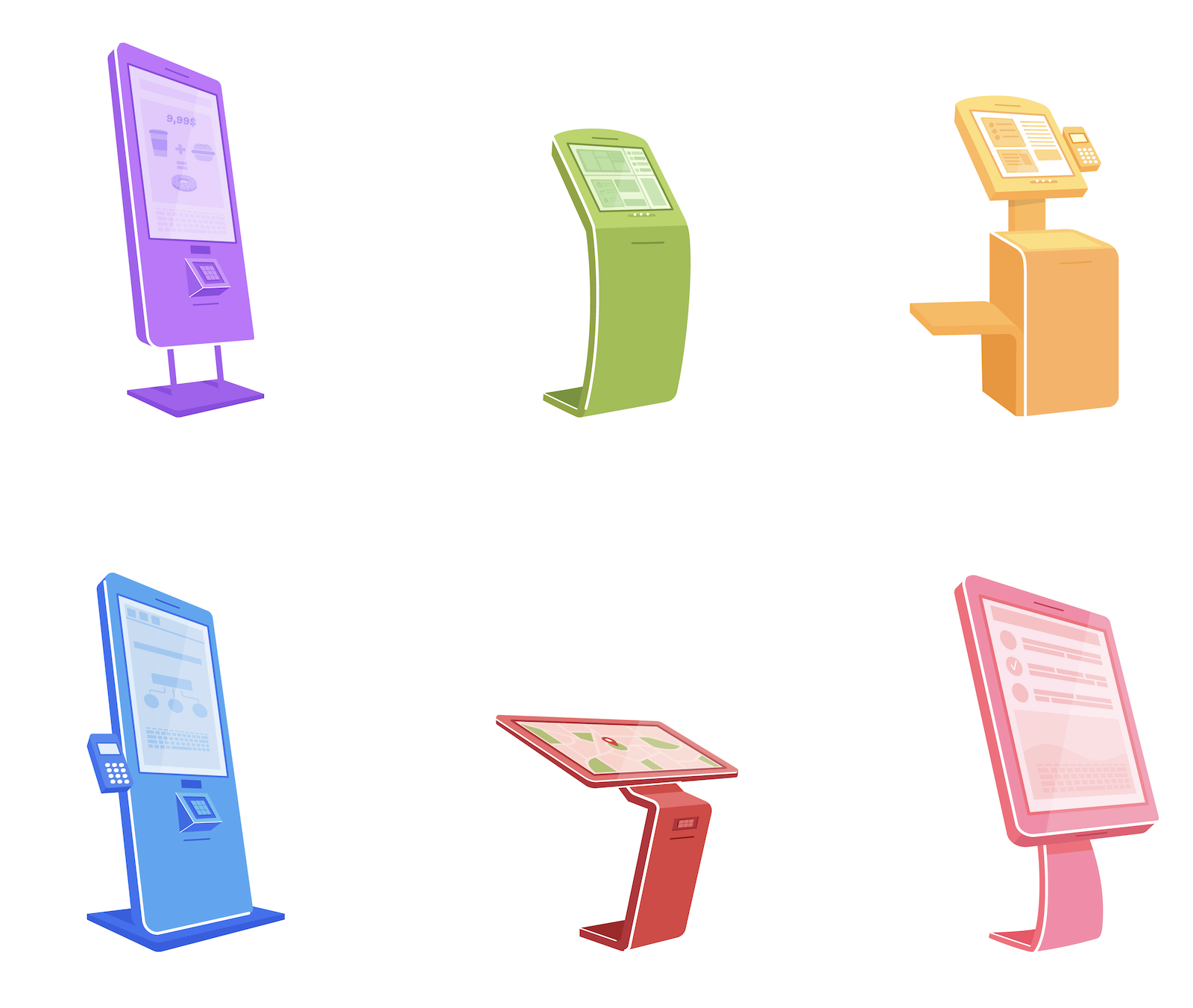Forbes: 65% of Customers Visit Fast Food Restaurants with Kiosks More Often
Why are self-service kiosks essential for fast food restaurants to attract customers?

Contents
What is a Fast Food Kiosk?
Kiosks have been appearing in more and more fast food restaurants in the last few years - and for good reason! A kiosk (sometimes referred to as a self-serve or self-service kiosk) is an interactive touch screen where customers can place their own orders and even make payments without having to interact with cashiers. Kiosks like these are helping fast food restaurants reduce on manpower while speeding up the ordering process.
Once a customer has made their order and paid via the a kiosk, they will receive a receipt with their order number and can simply wait until their number is called out, which indicates that their fast food order is ready for pick up.

Major Fast Food Brands Help Kiosk Industry to Reach 30.8 Billion in Value
Data shows that most of the major fast food franchises around the world are now utilizing kiosk technology to speed up the ordering process while modernizing how their businesses function. Just some of the big name fast food players that have major plans to implement more kiosks include KFC, Subway, Taco Bell, McDonald’s, Tim Horton’s, Dunkin’ and Wendy’s. As large fast food franchises lead the way, more and more smaller fast food restaurants are adopting kiosks as part of their sales strategy, which may boost the value of the kiosk industry to a staggering 30.8 billion by 2024.

What Benefits are MNC Fast Food Chains Seeing from Kiosks?
There are three main benefits that large fast food chains are seeing when using kiosks as part of their business model. Let’s examine what these three benefits are.
1. Large Returns
Former CEO of McDonald’s, Steve Easterbrook, said that the global giant is seeing a large sales boosts after the introduction of kiosks into fast food restaurants.
It is very likely that McDonald's' higher average check is because of kiosks’ ability to upsell items efficiently. Kiosks bring in higher checks by being extremely versatile and allowing fast food companies to showcase menu items that make it easy to upsell and cross-sell.
2. Removal of Traditional Cashier
While some would see this as a negative thing, in the case of fast food restaurants, not requiring a cashier can actually lead to higher sales. This boils down to two main reasons. First, a kiosk frees up staff, allowing them to greet customers, upsell items, help with the kiosk technology or even cook during rush hours. The second reason, as former KFC CEO, Gavin Felder says is, “kiosks help ease order anxiety, which explains why [customers] tend to order more through the technology.” What this means is that customers are free to order more without fear of being judged by cashiers. This ends up leading to bills with increases of between 5-30% in spend amount.
3. Speed and Convenience
Perhaps the most obvious and important perk of having a kiosk in a fast food restaurant is that it helps put the ‘fast’ in fast food. Customers can interact quickly and efficiently with kiosks and there is far less potential for errors in the final orders if customers are in control. Wendy’s CEO Todd Penegor confirmed that Wendy’s will add more kiosks to their fast food locations in an effort to boost speed and convenience for customers.
Do Customers like Using Kiosks at Fast Food Restaurants?
With such compelling reasons to install kiosks in fast food restaurants, a larger number of people have now interacted with them. Given that the fast food industry shows no signs of slowing down on their installation of kiosks, is this a wise move? Certainly, if customers are not receptive to kiosks, it would be foolish for fast food joints to keep installing them.
Well, data shows that of customers who had interacted with self-serve kiosks, 65% of them said “they would visit a restaurant more often if self-service kiosks were offered.” As customers get more and more accustomed to the efficiencies of kiosks in fast food restaurants, they begin to gravitate more towards restaurants that have them. A not so dissimilar shift happened as Amazon got shoppers addicted to one-click buying from online stores.
A study by Tillster revealed another interesting statistic that points to why customers prefer to use kiosks when placing orders. Line length can have a major impact on how likely a customer is to place an order at their favorite fast food location. However kiosks not only reduce line length due to quick and efficient ordering capabilities, but they also have an effect whereby “if kiosk ordering is available, many customers will still stick around.”
Finally, any preconceived notions that only tech-savvy millennials like using kiosks is being proven to be a fallacy. Indeed, “Customers of all ages are now looking for digital interactions in restaurants, especially ones that provide them with a faster and easier dining experience.” This indicates the wide appeal to all types of customers that fall within fast food restaurants’ target demographics.

Fast Food Restaurants and Tech Solutions are Now Inseparable
With large fast food chains leading the way, popularity for restaurant technology is quickly on the rise. Currently, “41% of quick-service operators plan to devote more resources to tablets, iPads, tableside ordering systems, or self-serve kiosks.”
On top of that, it seems this market shift is strongly in favor of restaurant tech solutions that offers more personalization which “connects customers to the brand and makes it easier to engage with them.”
Alongside kiosks, many fast food restaurants and chains are building their own ecosystem of products that boost their business operations and appeal to customers. McDonald’s’ former CEO, Steve Easterbrook elaborated, “The technological ecosystem we're building will enable us to meet these rising expectations, positioning us for new opportunities to elevate and transform the customer experience.”